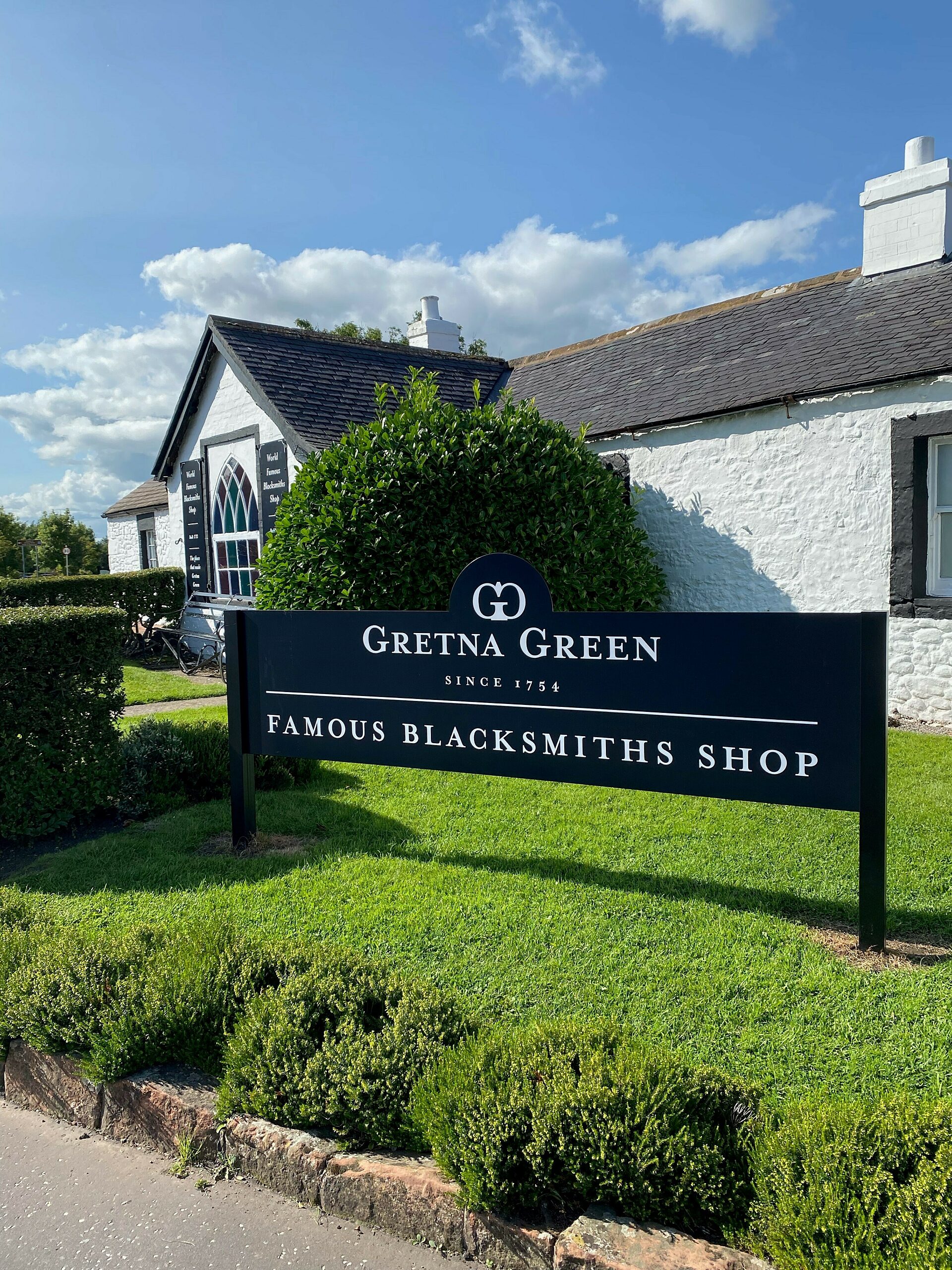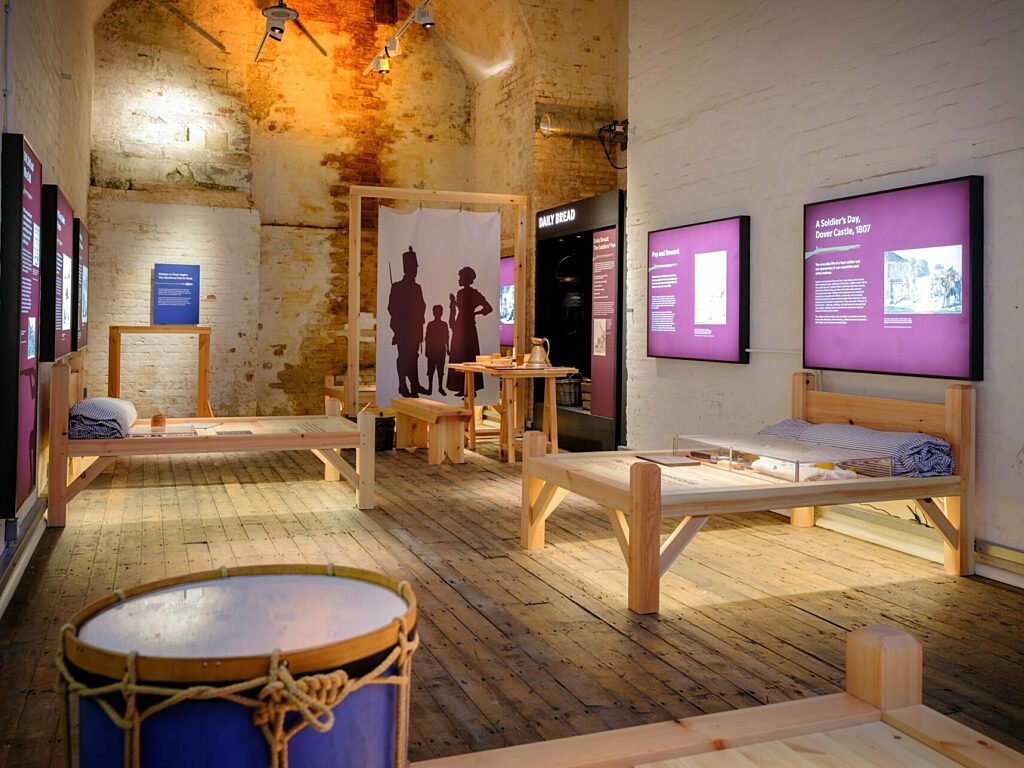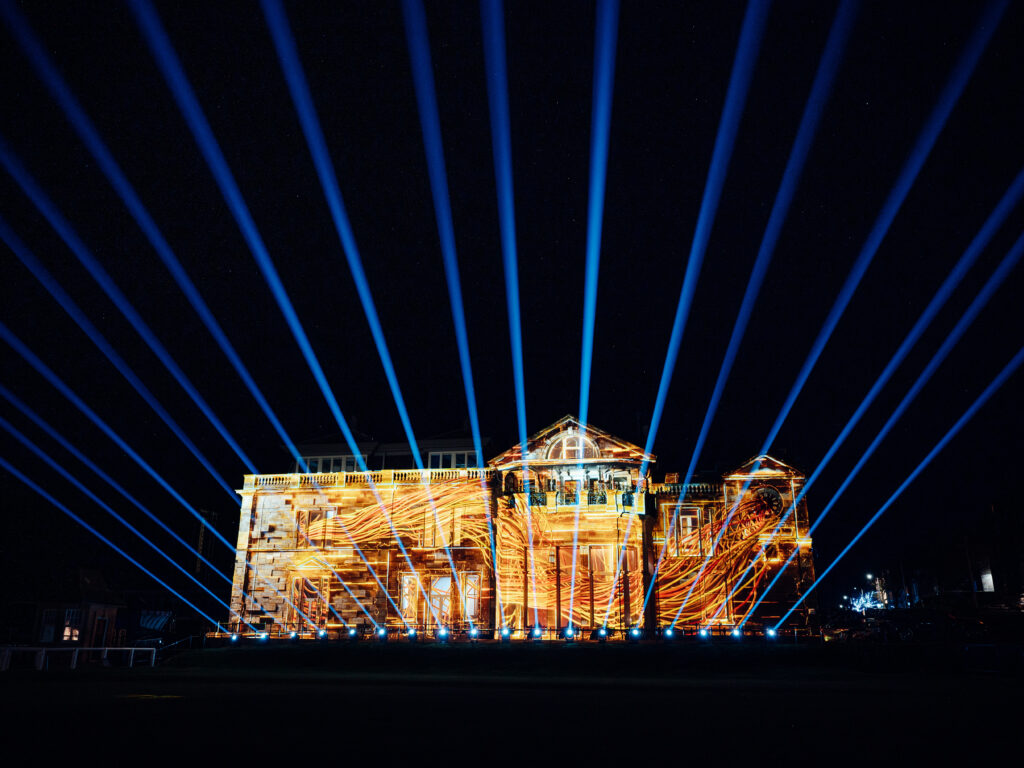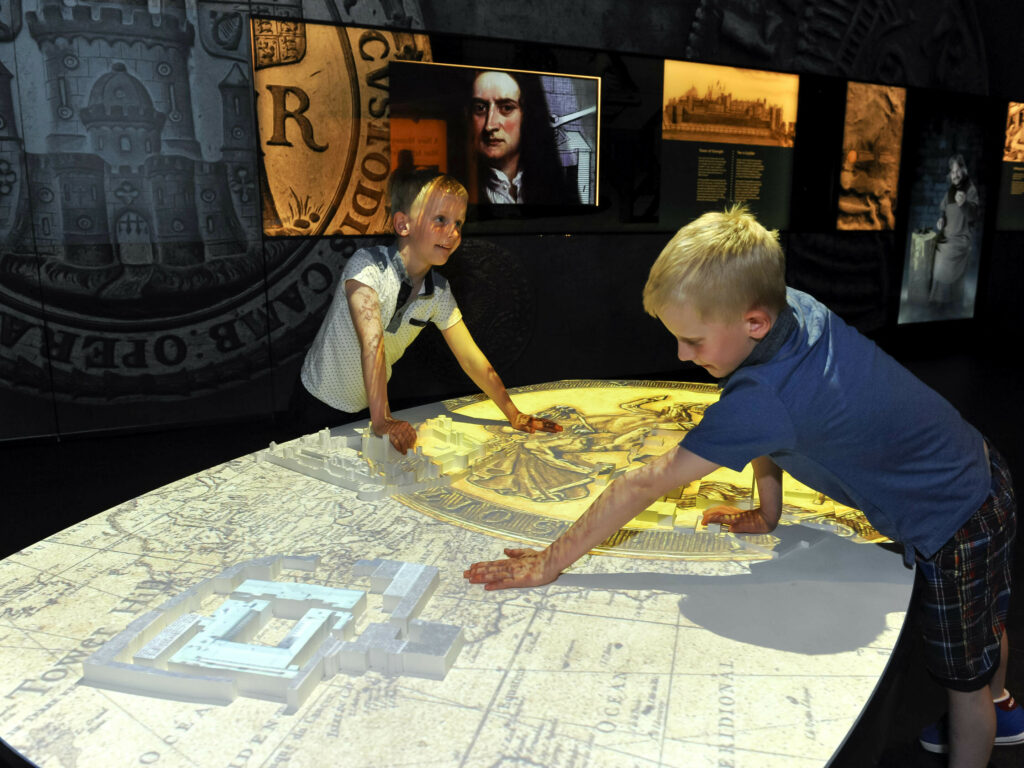Mather & Co have recently designed new wayfinding systems at the home of Anvil weddings, Gretna Green, and at the acclaimed Carnoustie Golf Links.
Clear and consistent signage
Well-designed wayfinding begins with clear and consistent signage. Signs should be easily readable, employing legible fonts, contrasting colours and appropriate sizes. A good wayfinding system should allow users to understand the layout and direction without much thought. Logical organisation, such as grouping related facilities together or using familiar landmarks, helps users build a mental map of the space.
Adaptability and flexibility
Environments change, and so should wayfinding systems. A design that allows for adaptability to different scenarios – whether it’s a temporary event, construction, or a change in layout – ensures the system remains effective over time.
Inclusive design
A well-designed wayfinding system should seamlessly integrate with the overall design of the space. This not only enhances the visual appeal but also ensures that signage does not appear as an afterthought. Signage should be positioned at various heights for different eye levels, and information should be presented in multiple formats, including braille and audio for those with visual impairments.
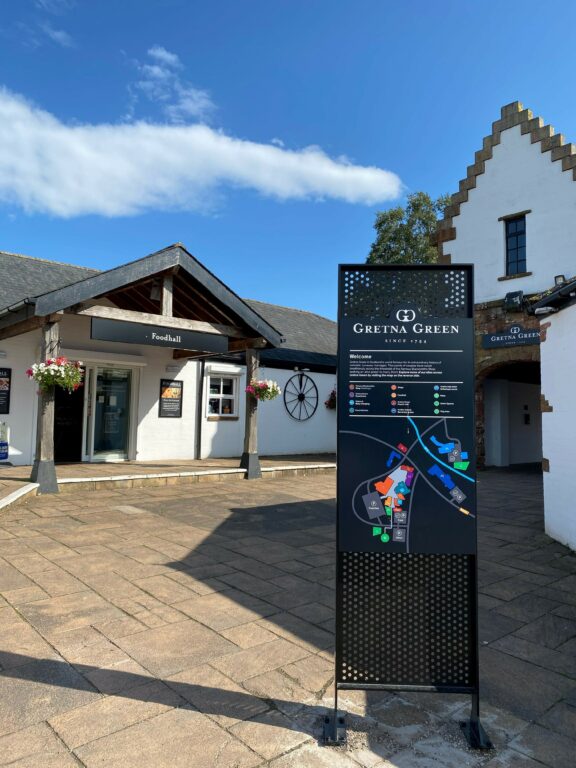
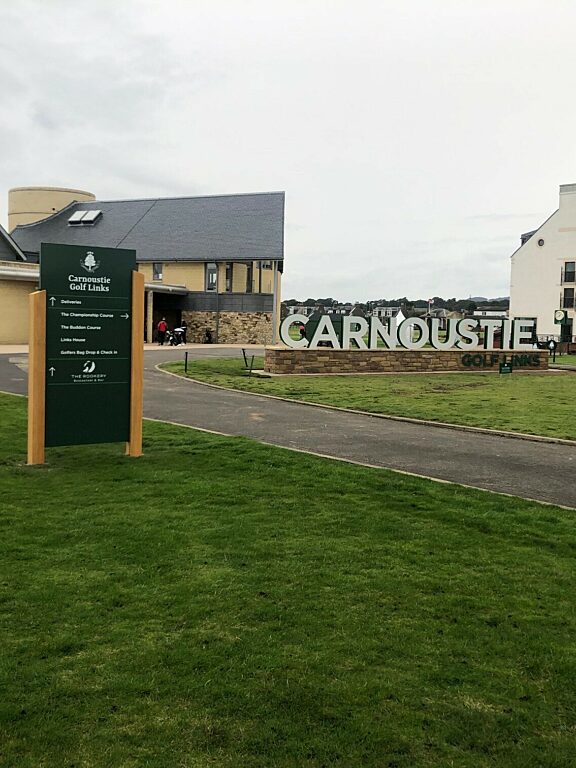
Beyond Directions
Wayfinding is more than signposts; it’s about improving the visitors’ experience overall. At Gretna Green, we merged the rich heritage with functionality. The new wayfinding system not only guides visitors through the historic site but does so with a touch of elegance. The integration of materials in the wayfinding reflects the Gretna Green Experience and retail area – ensuring a visual cohesive visitor journey.
With the Carnoustie Golf Links signage, we suggested the use of arrows with tails and varied text sizes based on whether visitors will be viewing the signs from a car or walking. We also recommend limiting the number of directions to three, to avoid distracting drivers.
Creating a Sense of Place
Carnoustie’s wayfinding, with its strategic placement and design, becomes an integral part of the golfing landscape. It doesn’t interrupt the scenery; it becomes part of it. This integration adds to the overall experience for visitors, making the golfing experience not just a game but a journey.
The primary goal with the wayfinding at Gretna Green was not only to guide visitors through the main Blacksmith site, but also to forge connections with adjacent attractions like the Old Toll Bar and Gretna Hall, forming a unified visitor experience across the full site.
As we continue to explore new technologies and design principles, the future of wayfinding promises to be even more immersive and user centric. Incorporating well-designed wayfinding is the key to unlocking the full potential to any space.
Do you need help navigating a new wayfinding system? Drop us a line at info@matherandco.com or give us a call on 01625 521 128.

